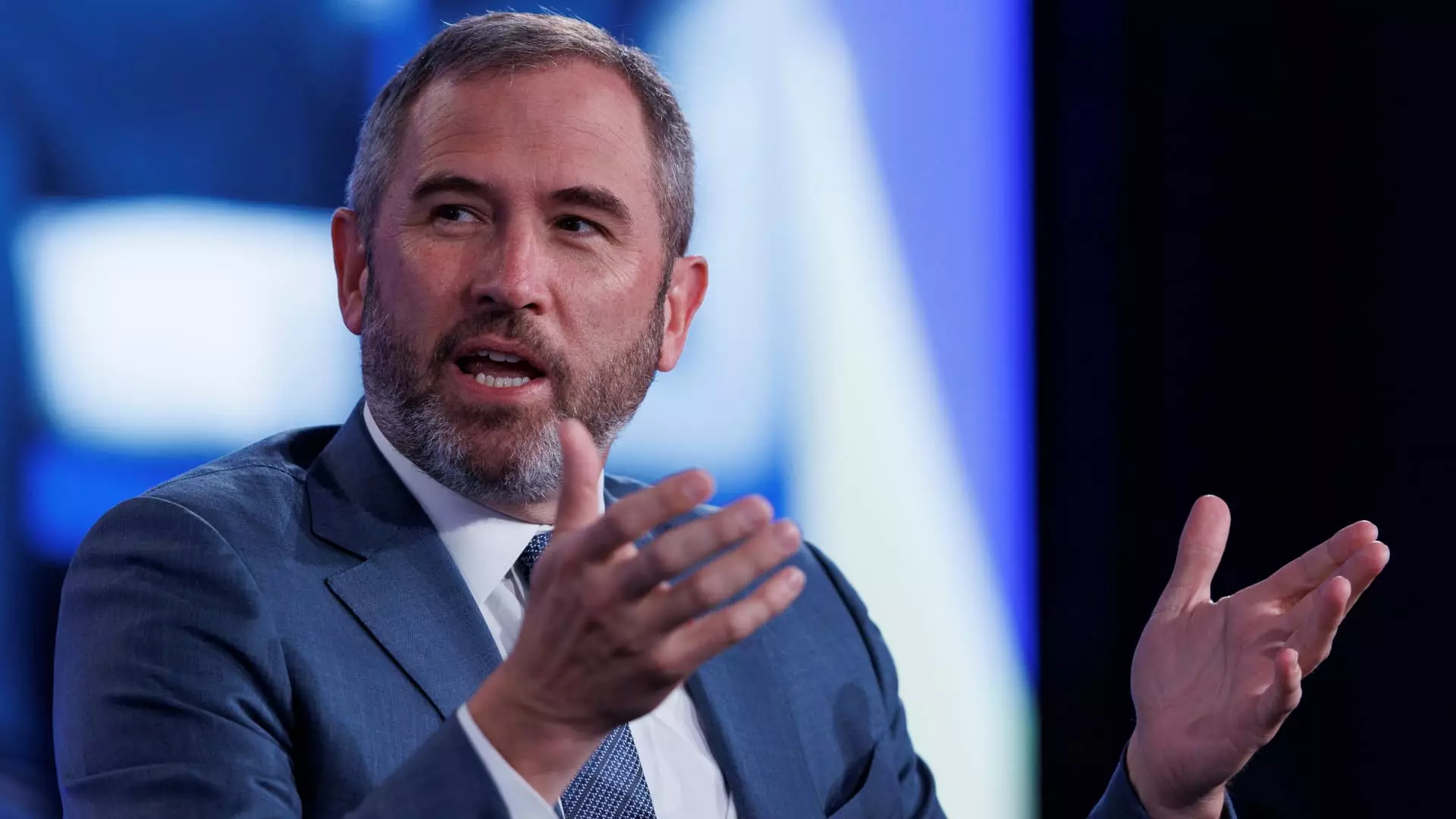The sphere of cryptocurrency has never been devoid of controversy, particularly concerning regulatory frameworks that can either bolster or stifle innovation. Ripple Labs—under the leadership of CEO Brad Garlinghouse—stands at the very intersection of these debates, especially as the impending U.S. elections loom large over the future of crypto regulation. Garlinghouse’s recent remarks suggest a cautiously optimistic attitude toward a more favorable environment for cryptocurrencies following the electoral outcome, but it is essential to unpack the layers of sentiment fostering this perspective.
The Evolution of U.S. Crypto Regulation: A Historical Context
Garlinghouse’s skepticism about U.S. regulatory practices is not unfounded. The tumultuous journey of Ripple, primarily linked to its digital asset XRP, has encountered numerous setbacks since the Securities and Exchange Commission (SEC) filed a lawsuit against the company in 2020. This legal confrontation sparked broader discussions about the classification of cryptocurrencies as securities and led to panic in parts of the industry. However, a key victory last year with a court ruling that XRP is not classified as a security in retail transactions marked a significant turning point for Ripple and the crypto sector.
The regulatory journey has various phases, often mirroring political climates and administration policies. Ripple’s operational model is mostly international, with approximately 95% of its business shunning the U.S. Given the challenges presented by Washington’s regulatory stance, it is understandable that Garlinghouse advises fintech startups to “incorporate outside the United States.” A strategy that reflects the need for greater security and operational latitude in a rapidly evolving market.
Garlinghouse has asserted his belief in a pro-innovation Congress emerging from the forthcoming elections, revealing his thoughts during a CNBC interview at DC Fintech Week. His conviction hinges on the premise that regardless of voting outcomes, there will be a notable shift toward a regulatory framework that aligns more closely with the interests of the crypto landscape. This assertion resonates with many industry leaders who aspire for policies that can catalyze innovation rather than merely impose restrictions.
However, optimism about the future must be tempered with the realities of current political sentiments surrounding cryptocurrency. The bipartisan support previously seen in Congress has begun to fray, creating a more partisan atmosphere. Garlinghouse pointed out that contrasting perspectives between political figures—like Donald Trump’s self-identification as “the crypto president” versus Kamala Harris’s more cautiously supportive stance—could significantly impact the industry’s future. The stakes have never been higher, and the repercussions of the election outcomes could reverberate throughout the industry.
Ripple has been more than just a participant in the crypto economy; it has actively engaged in political discourse through significant financial contributions. The company recently donated $45 million to the Fairshake pro-crypto political action committee, alongside individual donations from Garlinghouse and co-founder Chris Larsen. This financial backing for political candidates seeks to advocate for pro-crypto policies and foster a more favorable regulatory landscape.
Garlinghouse’s commitment to this cause indicates a strategic alignment between the crypto space and influential political arenas, aiming to reverse what he describes as an “attack” from the current administration. The rationale behind such activism points to a broader industry sentiment regarding the necessity for regulatory clarity and support rather than hostility.
The concept of a “reset” as posited by Garlinghouse is critical to understanding future trends in cryptocurrency regulation. While he emphasizes that the scale of such a reset is subject to debate, the general consensus among industry participants is that progress is inevitable. The current landscape—one he describes as hostile due to initiatives like “Operation Chokepoint 2.0″—urgently necessitates re-evaluation.
As prospective leaders step into positions of influence following the elections, the potential for a new regulatory narrative that balances consumer protection with innovation becomes tangible. The industry is animated by the hope that regulators will develop thoughtful and reasoned policies that can unlock the full potential of digital assets while still addressing overarching concerns.
While uncertainty permeates the crypto regulatory environment, Garlinghouse’s assertions of hope and strategy signal an industry on the brink of transformation. As new political landscapes unfold, a redefined approach to cryptocurrency regulation may emerge, offering the sector a chance to advance undeterred by outdated and obstructive frameworks. The coming months will be pivotal, both for Ripple and the broader cryptocurrency ecosystem.


Leave a Reply